Strong customer relationships distinguish the great brands from the companies that just sell, well, stuff. While the stuff you sell is pretty important, the conversations, education, and support surrounding each transaction are what keep customers coming back again and again.
Many companies view relationship-building as something that comes after someone is already a customer. Things like loyalty programs, an awesome customer support team, and drip emails are all examples of ways brands keep in touch with the customers they already have.
But what about relationship building with prospects?
Building strong relationships isn’t only important as part of your customer service experience. Relationship building is equally (or maybe even more) important during the sales and marketing processes.
In this post, we’ll show you how to build customer relationships with the long view in mind—which begins by creating a holistic strategy that considers all your customer-facing teams. Keep reading to learn more about:
How customer-obsessed is your business? Take the quiz. 💚
Why should you build customer relationships?
Customer relationships are the most valuable currency you can have in today’s volatile economy. To understand why, let’s look at a few market trends that are causing it.
Depending on how you look at it, we’re either living in the golden age of capitalism or a wild, wild west version of the free market economy.
Competition is at an all-time high and “business monopoly” has become a mere myth. For every business that boasts of having a proprietary product or service, there are at least 10 other competitors in the same category who offer similar solutions for a lesser price.
Most businesses today, big and small, are defaulting to a subscription-based business model. But churn—the rate at which customers abandon a brand—is the arch-enemy they all fear. Customer churn (and by extension, a low customer retention rate) is pretty common these days because people have so many products and features to choose from.
Good customer relationships can save your brand because returning customers are your biggest defense to fight customer churn, improve brand loyalty, and stay ahead of the competition.
The importance of a multi-pronged customer relationship-building approach
Which relationships do you value the most?
Probably the ones you’ve spent the most time nurturing, whether they’re with friends, family, or colleagues. The connections that tend to be the most important are with the people who routinely check in, who stay close to what you have going on, and genuinely want the best for you. They make you feel special.
Now, think for a second about someone who you may have fallen out of touch with. Maybe this person never checks in to see how you’re doing, or when they reach out it’s only to see what you can do for them. Whatever it is, when you see their name pop up on your phone or in your inbox, you’re like “Meh.”
The same feelings can apply to companies. The brands that don’t spend any time nurturing their relationships with customers are often the ones that miss out on forming genuine connections. For example by just being reactive when problems come up and the customer has to contact you.
We see it all the time in brands who center their marketing and sales campaigns around only selling products or services. They spam inboxes, spend tons of money on ads, and compete for bottom-of-the-barrel prices just to get the sale. When the transaction is done, they deliver a subpar experience for the customer and move on to the next one.
Not only is this incredibly frustrating for the customer and can create a negative reputation for the brand, but it’s also expensive. Constantly searching for new buyers and convincing them to make a purchase, over and over and over again, is exhausting—and it doesn’t help your company grow quickly.
So, how do you avoid this?
That’s where a multi-pronged approach comes in. By creating a customer relationship building strategy that thinks about your customers’ experience from all angles, this gives you an opportunity to connect with customers (and potential customers) on every level. Instead of only reaching out when you want them to buy again or only communicating when they come to you with issues first, you’re able to initiate thoughtful conversations and be there when the customer needs you.
3 tips for building customer relationships through customer service
Customer service is the low-hanging fruit of providing a better customer experience. You’re already interacting with your customers, but are you providing them with the resources or support they need to become long-term customers?
Here are some tips for how you can improve your customer relationship through a customer service lens.
1. Provide options for connecting
We have a lot of options for connecting with customers. From traditional phone calls to social media direct messages, a lack of communication with customers certainly isn’t because of a lack of opportunity.
But with so many different options come different preferences. Your customers are going to want to connect with you in the way that they find most convenient. If you only have limited opportunities, you’re not providing a great experience.
To set your relationship off on the right foot, give your customers different options for connecting. Keep your DMs open, have a customer service phone number readily accessible on your website, and maybe even offer SMS or chatbot support.
Providing these different pathways for conversations allows you to meet your customers where they are, rather than expecting them to come to you. Making it easier (and more convenient) for them to get in touch means they’re more likely to reach out—and you’re in a better position to start building a stronger relationship.
💡 Pro-tip:
An all-in-one communications platform lets you manage a variety of channels in one place.
Having multiple customer support channels means you have more inboxes to check, but with a good contact center platform, you can get all your messages right in one place.
For example, RingCentral consolidates omnichannel customer interactions (across Facebook, Instagram, live chat, and any other channels your business uses) all in one place so that you don’t have to toggle between a bunch of different windows and tabs:

Not only that, but it can also reduce the risk of your team missing an important message and allow you to provide better support.
And this is the cool part: RingCentral also connects your conversations with a particular customer across different channels. That means you can see if a customer has reached out about an issue or question in the past (even if it was on a different platform) so you can provide a more thorough or up-to-date response. Here’s a quick look at it in action:
2. Make sure your team is properly trained
Have you ever called customer service only to be met with someone who doesn’t have a clue what they’re talking about? Well then, you know just how frustrating an under-trained support team can be.
Any time a customer reaches out with questions or concerns about the products or services you’re offering, you want to make sure they’re interacting with a knowledgeable staff member capable of solving all their problems. Anything less than that will only hurt your brand.
To start creating strong customer relationships, prioritize support staff training. Make sure each customer-facing or client-facing team member understands your products and services and that they’re educated on company policies and procedures.
💡 Pro-tip:
Have specialized teams equipped to handle different challenges.
Depending on what you sell, it can be a lot to expect all your team members to know the ins and outs of every product. Instead of training all your employees on everything, group them by specific offerings and provide in depth training for just that area.
Specialized customer support teams can allow you to provide better support and show that you take your customer concerns seriously. Customers can get their questions answered or concerns addressed faster, creating greater potential for strong relationships.
3. Use self-service opportunities
Although it may seem like self-service customer service opportunities removes the communication that can lead to strengthening a customer relationship, providing ways customers can get answers themselves can actually be great for building trust and creating stronger connections.
Think about a time you’ve had a seemingly small question about something you considered buying. It’s not important enough at the moment to wait on the phone or send an email, or maybe it’s the middle of the night and customer service isn’t available 24/7. In these moments, you just want a quick answer.
This is where self-service comes in. Self-service support options, like chatbots or a knowledge center, allows customers to find the answers they need to basic questions on their time. It also shows that you’re in tune with customer needs and you’re taking proactive steps to make sure their challenges are handled as soon as possible:
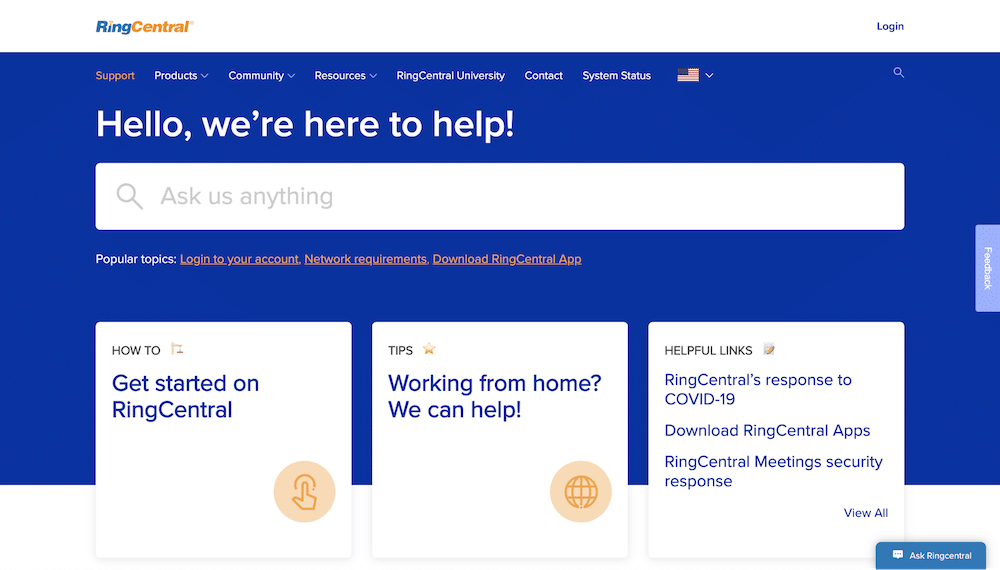
For example, here’s what our knowledge base looks like. You can browse the tips for how to use the RingCentral product or search for a specific topic.
3 tips for building customer relationships through your sales process
Sales is a relationship-based business no matter what you’re selling. When you have strong relationships with prospects and customers, convincing them to buy (and buy again) gets much easier.
Here are three ways you can build stronger customer relationships during the sales process.
1. Respond promptly
Whether your sales process involves a string of face-to-face (or these days, video) meetings or you sell products through an e-commerce site, any time a customer reaches out, they’re going to want a quick reply.
A consistent communication cadence can make customers feel welcome and supported, and like their business really is valuable to the business—even if your sales teams has dozens of other deals in the works.
💡 Pro-tip:
Look for ways to make communication easier for your team, both with each other and with your customers or clients.
A CRM is crucial for sales success, so it probably is no stranger to your sales team. However, if your CRM is separate from your other communications platforms, the important information stored within becomes siloed and harder to find.
Integrating your CRM with your phone service or communication platform makes life easier for your sales team because calls with prospects get automatically logged into their profile, and everyone can quickly see the full relationship history with any contact with a quick search. From specific products or features that the prospect was interested in, to tidbits and details about their company and which channels they prefer to contact you on—all of this information that seems really minor, but is actually crucial for building relationships, can be automatically recorded.
For example, Salesforce integrates with RingCentral to do exactly that, allowing you to quickly respond to incoming queries from prospects or customers and never miss a follow-up:
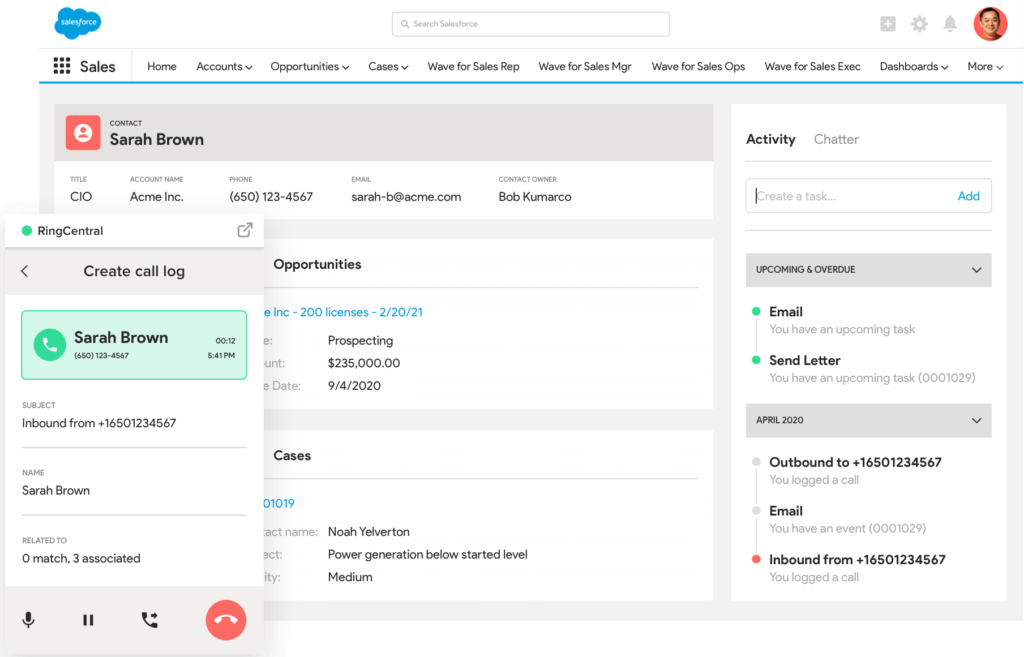
🕹️ Get a hands-on look at how RingCentral is designed to help you build better customer relationships by booking a product tour:
2. Focus on building the relationship first, not pitching
Pitching is traditionally one of the biggest parts of a sales job. But just pitching a product without getting to know the customer or the challenges they’re facing can create sales pressure that pushes the prospect away.
Rather than just pushing a product or service at anyone who will listen, focus on creating conversations first. Then you can determine what offering is right for your future customer before giving them a pitch.
Prioritizing conversations gives you an opportunity to get to know your prospect, the challenges they are facing, and what they’ve tried in the past. You stop looking at the prospect as a number and start working alongside them to find the right solution.
Customers will remember that you heard them out and didn’t try and push any product to get a sale. They’ll trust your expertise and come back to you again when they’re ready for more help solving other problems.
💡 Pro-tip:
Know when a customer isn’t right for you. You’ll save their time (and yours).
It’s not that uncommon that you’ll run into a prospect looking for something that you just can’t offer. Maybe their budget doesn’t match your prices or they have a challenge you know you can’t solve.
While it’s tempting to try and find the best fit you can offer, it’s not always the right decision. Sometimes you need to let that prospect go to an alternative.
Knowing when to step in and say you can’t offer what they’re looking for might mean turning that customer away for now, but if you’re respectful and helpful, they might just come back down the road. They will be grateful that you listened to their needs and provided a recommendation that actually fits without expecting them to compromise.
3. Stick to your commitments
As a sales rep, you’re often the first face a prospect interacts with. In these moments, you’re the face of the brand. And if you’re unable to keep up with the promises you make, you could ruin the reputation of the entire company.
If you promise to do something, make sure you do it. You don’t want prospects waiting for an email you forgot to send or refreshing their inbox for more information that’s never coming through.
Keep your word. If something happens that prevents you from getting things done on time (we are all human, after all) make sure to either let your prospect know or tag-team another rep in to help.
💡 Pro-tip:
Use a task management tool that fits in well with your existing workflow.
A task manager is nothing new—but where it’s located on your computer or phone might be. If your task manager is a separate app (or if each member of your team is taking notes and making to-do lists their own way), tasks might get lost and projects can get delayed.
One of the perks of the RingCentral desktop and mobile app is that not only does it let you send instant messages and make video and phone calls to teammates and clients, it also has a built-in task manager that allows you to assign and track to-do items:
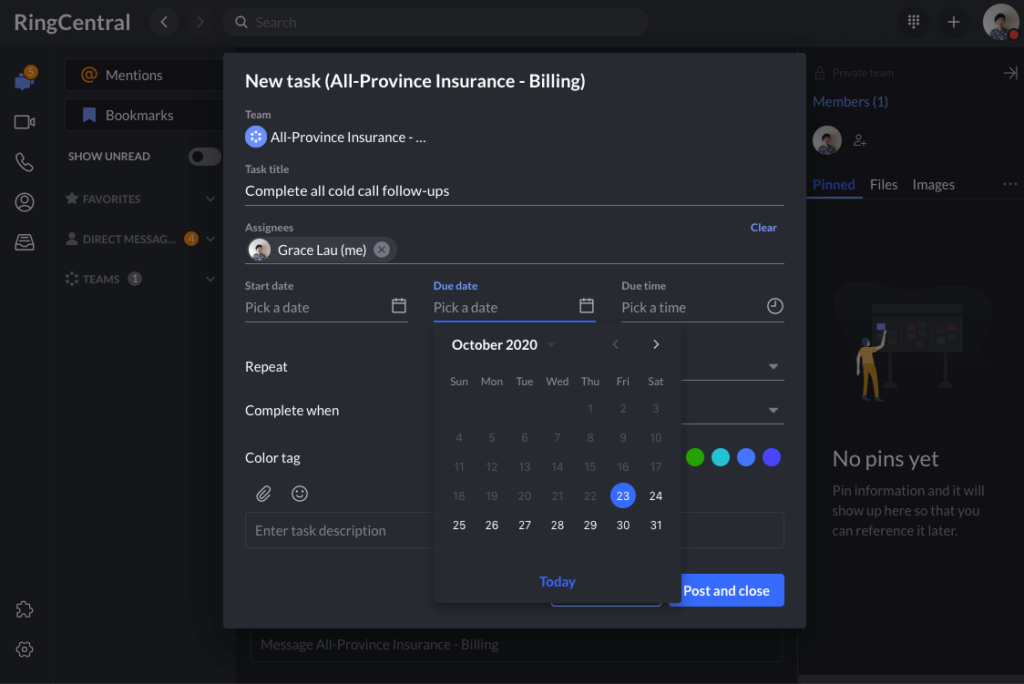
3 tips for building customer relationships through marketing
Marketing is often a customer’s first experience with a brand. It’s how they learn about the company and what gets them excited about buying from them. And it’s an important step in building strong relationships.
Here are three ways you can create stronger customer relationships through marketing.
1. Prioritize personalization
There’s no reason for thoughtless mass messages anymore. Customers have grown used to personalized emails, ads, and content—and if you want your customers to feel special, you need to provide them with it.
When using personalization to build relationships, you need to go beyond just adding “Dear [First Name]” to your emails. At this point, that’s the bare minimum. Your marketing messages should be personalized based on products your customer has purchased, their unique demographic, and more.
This can feel overwhelming at first. How are you supposed to share unique messages with every one of your customers? But don’t worry. Start small.
Rather than biting off more than you can chew, focus on something achievable you can do to add more personalization to your marketing messages. Maybe it’s adding a unique tag in your CRM to identify the products a client has purchased or using automation tools that can send specific content based on customers behaviors.
As you start to segment your customers and send more unique messages, it will be come easier and easier to identify opportunities for more personalized communication.
2. Make your messaging human
When it feels like your marketing is on autopilot, it’s easier to get ignored. Even if there is someone manning your email campaigns and social posts, if they don’t feel like a human is behind them, customers might be hesitant to engage.
Encourage the “human” side of your business—especially on platforms where two-way communication is possible (like on social media). By creating content that feels natural for such social spaces, you can become a part of the conversation instead of disrupting it.
There are a few easy swaps you can make to create a more human voice for your marketing. One is to send emails from a specific person (maybe you), not the company.
This can make the message feel more one-to-one, like you’re sending a personal message to only that customer (even if your email list is actually hundreds of people long). When customers feel like you’re speaking directly to them, they’re more likely to listen to what you have to say.
💡 Pro-tip:
Create a unique brand voice that your audience identifies with.
Messaging can get tricky when you don’t know what your brand is supposed to sound like. If you’re not sure what your voice is, you might default to generic, formal messaging—which is safe, but won’t attract much attention for you.
Create a unique voice for your brand that shows off your personality. Who are you to the customer? What do they expect you to sound like? What phrases or words do you use? What phrases or words do you avoid?
Lay out some guidelines and make sure your entire company is on board (even your sales and customer support teams). Creating consistency with your brand voice can help your audience better identify with you so you can build stronger relationships.
3. Show off user-generated content
Marketing departments and agencies often try to replicate authentic brand experiences, but nothing comes close to content created by users themselves. That’s why user-generated content is so powerful in building relationships.
When real users share their experiences with a brand, prospective customers can imagine themselves in their shoes and past customers can remember what that experience is like. Because the content isn’t coming from a designed-for-perfection studio, it’s easier to trust.
Showing off your own user-generated content can help you build authentic connections with prospects while solidifying relationships with existing customers. And people love to get recognized from the brands they love, so it’s a win-win situation:
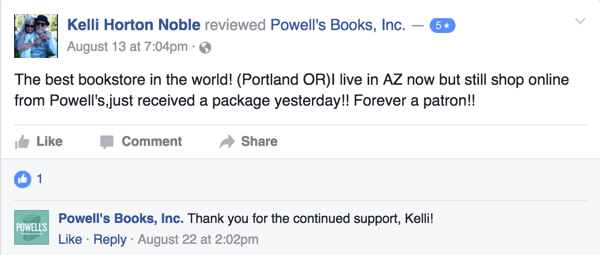
One of the most common ways to use user-generated content is on social media (learn more about best practices), particularly Instagram. When a customer tags you in a post or shares an image using your product, you can repost that image (giving credit to the original content creator).
But if you’re not on Instagram, don’t worry. User-generated content can come in many forms. Look for opportunities to get your customers involved in decision-making processes or encourage them to share stories that you can then feature on the website or in social posts. Get creative!
3 examples of customer relationship building from real-life companies
As you read the following examples, note how these companies have built or reshuffled their company DNA to deliver a well-rounded customer experience across all their touchpoints.
1. Wegmans
Actor Alec Baldwin of 30 Rock fame is perhaps the best person to rave about Wegmans’ fanatical brand loyalty. Wegmans is a family-owned food chain from Buffalo, NY with branches across seven states on the east coast of the US Sadly, they don’t have any stores on the west coast.
Many years ago, Baldwin’s mother refused to relocate to a swanky part of Los Angeles with her star son because she wanted to live close to a Wegmans store.
Now that’s some brand loyalty.
Wegmans customers worship the brand like it’s some kind of cult. After all, there aren’t many brands that have inspired a broadway musical or rank regularly among the best companies for customer service AND the best place to work:
But the secret to Wegman’s deep-rooted customer loyalty is not so much of a secret. They are just serious about genuinely caring for their staff and their customers.
For instance, Wegmans’ employee turnover rate is half the industry average because they invest generously in their staff. They spend more than $50 million a year on workforce training and development and award college scholarships to the interested ones without any catch. That’s great for employee morale.
And look at what happens when a business like Wegmans takes the employee-first approach. Wegmans collected an average annual sales of $9.7 billion in 2019.1 No wonder customers love Wegmans as much as their employees do.
2. Sephora
If there’s an oversaturated niche in retail, it has to be the beauty and skincare segment.
But Sephora has emerged as a winner even in such a tough market mostly because of its unblemished omnichannel strategy for customer engagement. The France-based beauty brand secured the #1 spot in the best Retail Personalization Index in both 2018 and 20192—and for good reason.
Sephora’s obsession with its customers is obvious in the way the brand unifies its offline store experience with its digital services. The moment its customers walk into one of the 2,300 stores across the globe, they’re in for a special experience.
From its in-store technology such as Color IQ that scans the customers’ skin to help them find the perfect lip gloss to offering one of the industry’s best loyalty rewards points (Rewards Bazaar) Sephora has retail experiences figured out:

And unlike other brands, Sephora’s loyalty program is a runaway hit because it lets customers choose how they want to spend their reward points.
Sephora’s high-touch customer relations also leverages digital channels such as emails, mobile, and in-app notifications to offer hyper-personalized recommendations and incentives that are hard to ignore.
And psst… you can also follow Sephora’s example and reach your customers across different digital channels using RingCentral’s Engage Digital platform. Even if you have a small (or one-person) team—and we’d argue especially if you have a small team, this type of solution is especially useful.
After all, it’s designed to make it easier for one person to manage multiple channels:
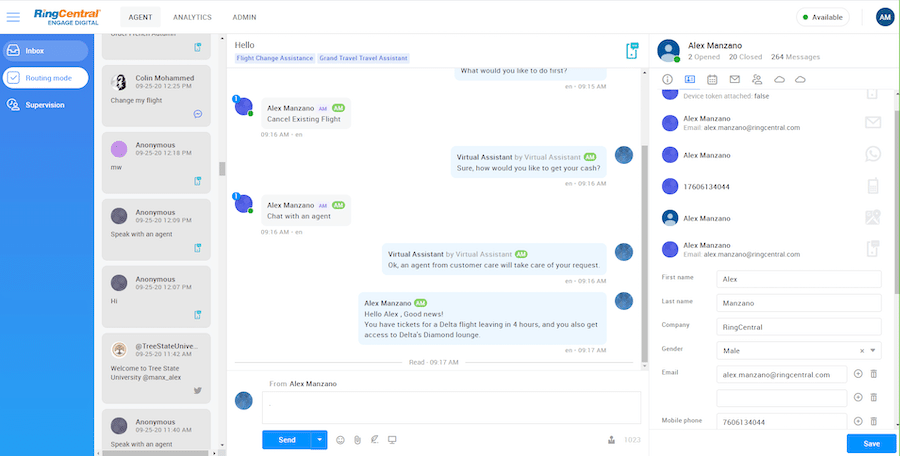
3. Lego
In 2003, Lego’s business empire was almost crumbled under an $800 million debt. In 2015, the Danish company rebounded as the world’s most valuable toy brand.3 It’s fair to say that Lego’s near-failure and comeback story are as tightly interlocked as their building blocks.
The quick gist of it: Lego almost went bankrupt because it had lost sight of its customers. They got carried away with their success and didn’t really care who their real target audience was. They hastily introduced a new line of toys and didn’t respond well to the customer complaints of damaged toys and late deliveries.
But once the upper management came back to their senses, they took some proactive measures that made Lego a household toys brand around the world.
First, Lego partnered with a customer experience management vendor to understand their customers’ pain points and devise a plan to improve their customer relations.
In addition to being a children’s toy brand, it also invested heavily in reinventing its brand image to cater to grown-up customers. For instance, it collaborated with Star Wars and Marvel Studios to create content that appealed to their grown-up fan base.
Then, of course, there’s Legoland theme parks built in partnership with an entertainment company that attracts kids and their parents alike. Lego also turned around its attitude towards customer service by positioning itself as a personable, friendly company. In 2016, one of its customer service responses to a seven-year-old Lego fan went viral in social media when one of their service reps took the time to write with a kind and thoughtful reply.
It’s a perfect example of the personal nature of customer relationships, and exactly the reason why small businesses actually have an advantage here. You don’t need a huge budget or a global team to remember your customers’ names and have a little empathy in your interactions.
Tie everything together and start building good customer relationships
The importance of building strong customer ties goes by many names—customer service, customer marketing, customer experience management, customer engagement, what have you. But don’t be too hung up on the semantics because they’re all aliases of the same principle, that is building long lasting customer relationships.
You can develop positive customer relationships as long as you have your head and heart in the right place and the right communication tools at your disposal. And if you ever feel your customer relationships need some work, just refer to the examples laid out in this article for inspiration and remember that relationships build over time.
1wegmans.com/about-us/company-overview/#:~:text=It%20is%20one%20of%20the,Supermarkets%20based%20on%20sales%20volume
2sailthru.com/personalization-index
3bloomberg.com/news/articles/2013-03-13/lego-builds-new-billionaires-as-toymaker-topples-mattel?cmpid=yhoo
Looking For Startup Consultants ?
Call Pursho @ 0731-6725516
Telegram Group One Must Follow :
For Startups: https://t.me/daily_business_reads




